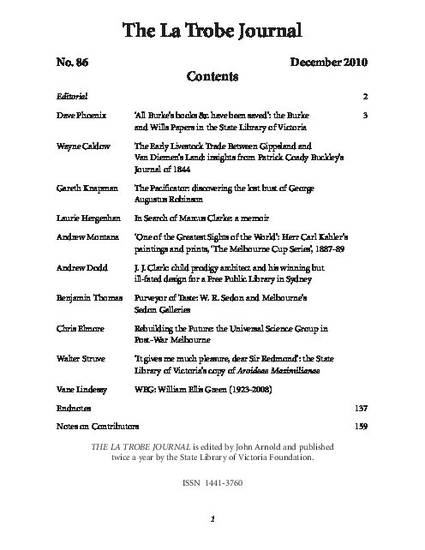
IN ONE OF THE BACKHANDED compliments for which Mark Twain was famous, he observed ‘in memory of the Greatest man Australasia ever developed or ever will develop, there is a stately monument to George Augustus Robinson, the Conciliator, in – no, it is to another man, I forget his name’.1 As a critic of imperialism and colonialism, Twain saw Robinson as a like-minded being who was on the right side of history. As far as Twain was concerned, this humanitarian hero and critic of colonial expansion was forgotten in the gilded age of 1890s high imperialism. In Twain’s time, stately monuments were devoted to the imperial heroes of empire – and Twain had little regard for those carpetbaggers. Nevertheless a stately bust of Robinson did exist. Sculpted in 1835, it was a commercial endeavour that proved unpopular and remained forgotten for at least 100 years.
- Aboriginal History,
- Australian History,
- Human Rights,
- Settler Colonialism,
- Colonial Art
Available at: http://works.bepress.com/gareth_knapman/2/